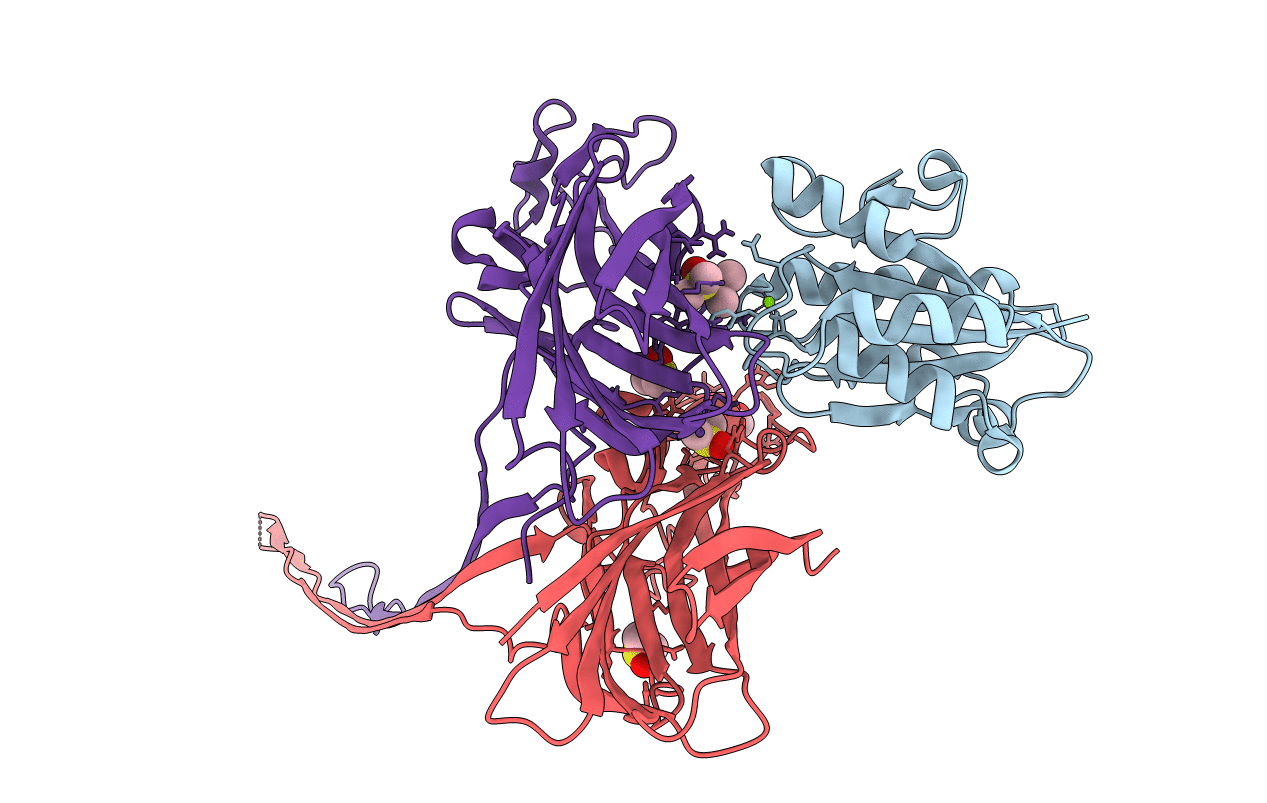
Deposition Date
2019-04-23
Release Date
2019-12-18
Last Version Date
2024-01-24
Entry Detail
PDB ID:
6RHV
Keywords:
Title:
Crystal structure of mouse CD11b I-domain (CD11b-I) in complex with Staphylococcus aureus octameric bi-component leukocidin LukGH (LukH K319A mutant)
Biological Source:
Source Organism:
Staphylococcus aureus (Taxon ID: 1280)
Mus musculus (Taxon ID: 10090)
Mus musculus (Taxon ID: 10090)
Host Organism:
Method Details:
Experimental Method:
Resolution:
2.29 Å
R-Value Free:
0.22
R-Value Work:
0.18
R-Value Observed:
0.18
Space Group:
P 4 21 2


